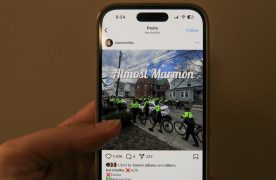Hearing the constant sound of car horns, avoiding reckless drivers, trekking crowded subway platforms, maneuvering busy streets on their way to work — for some, that sounds like chaos. For many in the millennial generation, that is the dream. Astronomically priced cupcakes and public transportation appeal to the generation who hopes to start a career in places full to the brim with talent, employment opportunities and offices soaring high above the city streets.
Cities have always attracted the young. We need action, change and the restlessness that comes from calling downtown our home. We’ve seen the trend on our televisions and laptop screens – the small town kid from suburbia who dreams of moving to the big city and making the cut. We wouldn’t expect cities to lose the younger generation that, in a very serious way, builds and shapes them, but perhaps change is on the horizon.
The New York Times released a piece on Monday, which claims that cities may soon start running out of millennials. According to Dowell Myers, professor of demography and urban planning at the University of Southern California, American cities reached their peak amount of millennials in 2015. Urban growth is predicted to stall. In cities such as Philadelphia, signs of a smaller metropolitan millennial population are already prevalent.
Another trace of the slowly diminishing millennial presence is the lowering cost of rent in cities with notoriously high costs of living. Zillow reported that New York City, Washington D.C., San Francisco and other metropolitan areas have all seen a decline in rent. According to the Times, this is due to fewer younger people moving in than expected, leaving new construction with no option but to lower costs.
Living in a city has always shown to be more expensive, from transportation to artisan coffee shops to housing. Though millennials may prefer moving to a city after graduation, either for job opportunities, the prevalence of a certain industry or the culture, for many it is not a feasible future. The cost of living in New York City is more than 50 percent higher than the national average, and several other metropolises aren’t far behind. The hustle and bustle may be craved by the younger generation, but the price tag that comes with city life is certainly not.
Cities, however, will never stop being appealing for young people. Youths have the energy and sense of adventure required to thrive in crowded streets, hectic metro systems and cosmopolitan lifestyles. Millennials get fulfillment from the day-to-day busyness of city life that the older generation, with kids, strollers and all, can get caught up in. Most adults would agree that cities are the best source of high paying jobs, which is why those entering the workforce choose to settle down there. Those fulfilling their undergraduate educations are on the tail end of the millennial generation. We want to follow the trend of those before us who took the city by storm, one luxury café and hipster store at a time.
The reality is that young people are still moving into cities. Those already there are just getting older. Many who age into their thirties, marry and start a family choose to begin that new life in the suburbs, areas that are statistically safer and stereotypically cleaner. Young people move into cities to start their career and move out to start their families; it has become a generational cycle further portrayed and encouraged through television, movies and media. Many would consider the move from urban to suburban as time goes on to be the norm in our society. Will the millennial generation be the first to change this?
It is no secret that where the younger generation goes, trends follow. Cities are expanding and the popular locale is forever moving. Three years ago, Brooklyn was the hot spot for artists and foodies who couldn’t afford the sky-high rents in Manhattan. Today, you’re uninformed if you don’t know that Queens has taken its place. Industries seep into unexpected locations and create pockets of popularity due to the presence of those who will utilize and propagate them. Berkeley, Seattle, Boulder and Portland are only a few examples of the areas that millennials are making their own, rather than funneling into the same huge cities that are already overpopulated as is.
The concept of city living has been glamorized for the millennial generation. “Sex and the City,” “Portlandia,” “Girls” — all shows that have created an alluring image of city living — have attributed to the idea that if you’re not in the city, you’re not doing anything worthwhile. People move to the “big city” because they’re convinced that those settings are where successful people are. The lucrative lifestyles we see, whether they be celebrities in Los Angeles, politicians in Washington D.C. or journalists in New York City, always take place in a metropolis. Rent may be high and food trends may be overrated, but the younger generation will always be attracted to the lifestyle of city residents.













